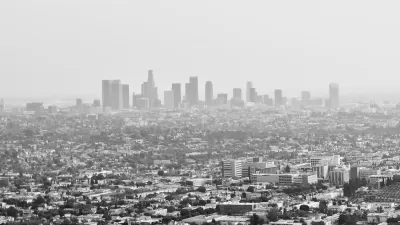The concept of surveying residents to get their take on a development may seem like a simple idea, but it is no easy task. Planner Clement Lau shares key lessons learned about conducting and creating surveys as part of the planning process.

When it comes to making decisions about what types of developments work in a particular neighborhood, who better to ask than the folks who live there?
Community surveys as part of the planning process are a key tool to help determine what elements of a project would work well in a neighborhood. However, creating a survey and getting responses are not as easy as it sounds.
“While creating a survey may sound simple, it really is not. It is much more than just coming up with some questions and then having some people answer them. Over the years, I have learned that it takes careful planning and consideration to put together a good questionnaire and implement an effective process of collecting information from our constituents.”
The first step is determining whether a survey is needed. Once a decision is made to move forward, the questions must be created.
“Good questions are clear and answerable for respondents. When crafting questions, we must have the target respondents in mind. We have to anticipate their receptivity to different types of question formats and their willingness to answer them.”
A sample group for a pretest should be formed once the survey questions are created.
“Pretesting a survey instrument with a sample of respondents is very important. Essentially, it helps us to figure out whether our questions are clear and answerable. While we as the preparer of the survey may think that it is fine, we do not really know until other people start filling it out.”
In the article, Lau outlines how to write good questions, conduct the survey, and present the findings.
FULL STORY: Surveys: Finding Out What People Want

Trump Administration Could Effectively End Housing Voucher Program
Federal officials are eyeing major cuts to the Section 8 program that helps millions of low-income households pay rent.

Planetizen Federal Action Tracker
A weekly monitor of how Trump’s orders and actions are impacting planners and planning in America.

Ken Jennings Launches Transit Web Series
The Jeopardy champ wants you to ride public transit.

How Project Connect Would Change ‘The Drag’
A popular — and sometimes deadly — Austin road will exchange car lanes for light rail.

Milwaukee Road to Get Complete Streets Upgrades
The city will reduce vehicle lanes and build a protected multi-use trail including bioswales and other water retention features on its ‘secret highway.’

Tackling Soil Contamination With Nature-Based Solutions
Los Angeles County residents and experts are turning to nature-based methods like bioremediation to address long-standing and fire-exacerbated soil contamination without resorting to costly and disruptive removal.
Urban Design for Planners 1: Software Tools
This six-course series explores essential urban design concepts using open source software and equips planners with the tools they need to participate fully in the urban design process.
Planning for Universal Design
Learn the tools for implementing Universal Design in planning regulations.
Ada County Highway District
Clanton & Associates, Inc.
Jessamine County Fiscal Court
Institute for Housing and Urban Development Studies (IHS)
City of Grandview
Harvard GSD Executive Education
Toledo-Lucas County Plan Commissions
Salt Lake City
NYU Wagner Graduate School of Public Service





























